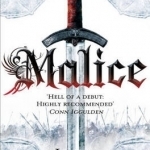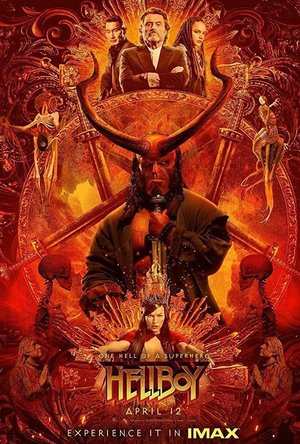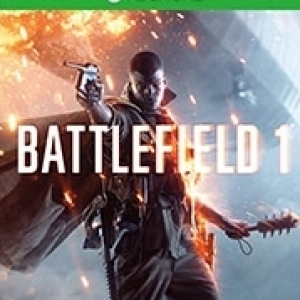
Mancala HD
Games and Entertainment
App
As previously featured by Apple in "New and Noteworthy" and "Staff Favorites" In Russia they call...

Outcry: Holocaust Memoirs
Book
Manny Steinberg (1925-2015) spent his teens in Nazi concentration camps in Germany, miraculously...
Ross (3284 KP) rated Malice: Book One of the Faithful and the Fallen in Books
Dec 1, 2017
The book moves between different character PoVs, which is fairly common these days, but I found some of the characters to be indistinguishable. For the first third of the book, if the PoV was Camlin, Kastell or Veradis I struggled to remember who he was or what he had been doing. This did start to improve around the halfway mark, but it is quite a slog at times to remember the events preceding this chapter.
The bulk of the book, however, follows Corban, a young blacksmith's son hoping to become a warrior some day, but is stuck working his da's forge, helping stablemaster Gar or apprenticing to healer Brina. His development over the book is well told, he doesn't suddenly become a master swordsman but at the same time we don't have to sit through chapter after chapter of him learning sword forms (Rand al Thor could learn a lot from Corban!).
Along the way, Corban has also become friends with a wild wolven (giant wolves hunted near extinction), whom he raised from a pup. Yes, exactly like the Stark children in GoT. Leave it.
The political intrigue and manoeuvring throughout the book is great as events seeming to be based on one king/queen's ambitions actually turn out to be based on another's treachery.
The battle scenes are well told and believable without the main characters always escaping unscathed.
The book finished with a number of deceptions uncovered and the main group of characters fleeing for their lives, with more secrets to be uncovered.
John Crowson (2 KP) rated Risk Legacy in Tabletop Games
May 29, 2019
The game is not flawless however. Due to the evolving map and rules, you really need to play with the same group of people each time, meaning if you can't get together too often it could take years to play your 15 games. Due to there being such a wealth of modifiers and variants (many of which occur only under certain conditions and as a "pick one of these two options") a large number of things arnt used, but you won't really notice this. Being a 15 game series there is also the possibility that you may make some modifications early on that cause game breaking OP/UP territories/playable factions, and you will have to live with these for the rest of your games.
All in all, I would recommend this game. But, not without warning. If someone has not played RISK before I would recommend a few games of the base edition before embarking on a 15 game run on RISK Legacy to see if you genuinely l like the game. This is ultimately an evolution of RISK not an alternative.
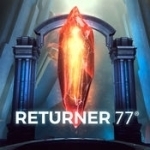
Returner 77
Games
App Watch
Returner 77 is a cinematic sci-fi mystery puzzle game. You are in a giant alien spaceship hovering...
games
Gareth von Kallenbach (980 KP) rated Tropico 6 in Video Games
Aug 14, 2019
Tropico 6 takes the familiar city builder game and turns it on its head a bit. You begin your life as El Presidente with the ability to customize the look and feel of your miniature ruler. Not only dealing with his/her physical attributes, but also defining their personality type. This provides special in-game bonuses which can affect your influence with the super-powers or even the internal factions themselves. Your next option is to design what your palace will look like, everything from roof-top holographic images of yourself, to the type of wall that surrounds your palace. While these are really nothing more than decorative facades on which you will build your spanning empire, it’s these little touches where Tropico really shines.
For those who haven’t played Tropico before, there is a two-hour tutorial that takes you through not only the basics, but some of the advanced concepts as well. It introduces the player to not only specific buildings, but also some of the more in-depth features that are provided. Concepts such as firing an individual from a building and closing the opening job requisition or identifying rebels and putting down uprisings are all covered in detail here. The tutorial however barely scratches the surface as to all the things that can be done. Thankfully Tropico 6 includes fifteen story missions that take you through numerous game concepts and challenges to build upon what the tutorial has taught you.
There are essentially two ways one can play Tropico 6, there are the story missions as well as the sandbox mode. While players will likely be quick to want to jump into Sandbox mode and begin cultivating their own island, there are compelling reasons to play through the story missions first. The story missions are not truly connected to one another, and while you must complete several to unlock them all, there isn’t an order in which you need to play them. If you go in order, the game will take you through the various “Era’s” that are new to the series. Starting with Colonial times where you regularly need to appease the crown until you can raise enough revolutionaries (or money) to claim your independence. Working your way through the World Wars (which roughly cover the events between World War I and World War II), into the Cold war and finally Modern Times. Each of the Eras unlock access to specific technology and buildings, ensuring that each Era provides a unique challenge to overcoming certain obstacles. Each story mission tasks you with a specific goal and places several obstacles in your way. Everything from claiming independence in the first mission, to going after the seedy underbelly of crime and bringing down a notorious kingpin. The story missions themselves last anywhere from one to several hours, ensuring plenty of game play in each one.
Tropico 6 brings a lot of new concepts and gameplay to the series. The game now takes place on a series of islands interconnected with docks and bridges. It’s easy to focus on your main island only to forget your others, and some missions will task you with specific goals that can only be created outside the main island. It’s a good introduction to thinking on a wider scale. Additionally, you can build a pirate cove that allow you to send pirates on raids. These raids involve everything from “rescuing” educated people or stealing wonders from around the world, like the Eiffel Tower or the Statue of Liberty. A new character known simply as “The Broker” provides opportunities to raise cash for your swiss bank account. The swiss bank account is a private account for El Presidente’ and allows him to purchase items from the Broker. These can be anything from blue prints that unlock buildings at a cheaper price, or the opportunity to automatically complete a demand without having to do the grunt work behind it. Election speeches also make their return to Tropico 6, elections are held every ten years to ensure you are keeping the people in your island nation happy. Lose an election and you lose the game, fairly straight forward. One opportunity to sway your people is to craft election speeches from the four categories. These include acknowledging an issue (like entertainment or health care), praising one of the four factions that exist on Tropico, blaming a super power (Axis or Allies) for the current state of affairs and finally making a promise to address a specific issue. Be warned however, that each of these choices can hold severe consequences and note that a promise to address a concern means you’ll be focusing on that before the next election.
Each of the folks who inhabit the island are individuals. You can literally select any person walking down the street and identify who they are, how they are leaning in the upcoming election, what political party they belong to and even where they work. If someone is a political rival you can bribe them to choose your side, if a particular set of rebels are causing issues you can have them arrested or locked up in an asylum. You can even execute any individual you want; however, this will have lasting consequences. The amount of detail is staggering; however, Tropico 6 does an excellent job of allowing you to be as micro managing as you want to be. While you can certainly go in and fire individuals from the various businesses that pop up, you certainly don’t have to.
Graphically Tropico 6 is a spectacle in itself. Everything from the waves as they slowly crash upon the shoreline, to the awe-inspiring sunsets. It’s certainly one of the most beautiful city builders around. Each building is unique enough to identify it easily and each has its own unique flavor all to itself. Even with all of this, I never encountered any hiccups in performance, and load screens are pretty much left to new games. Its soundtrack has a distinctive island flair to it, and while the longer you play the more repetitive it becomes, I never felt the urge to simply mute it. In fact, I found myself humming some of the tunes while doing chores around the house…yes it can get in your head like that.
Tropico 6 does have some flaws, but nothing truly game breaking. The road construction tool, while doing it’s very best to identify the best path you wish to take, will sometimes go a bit crazy. Spaces between buildings which should allow for careful road placement will be blocked for unknown reasons, which can force you to destroy existing buildings if you haven’t planned for expansion appropriately enough. With so much to do, some of the specific tools or buildings can be a bit difficult to find, in particular once you “acquire” a world wonder it took me several attempts to locate where you can go to actually place it. Again, nothing that stops the game in it’s tracks, and certainly some things that can easily be patched in later releases of the game.
Tropico 6 is all about freedom, the freedom to rule your tiny island kingdom the way you want. Well… at least the way you want as long as you can appease the numerous factions and ensure you get re-elected in the next general elections. You are free to do as much or as little as you want, and you are free to dig in as deep as any city builder type game allows you to go. The included stories ensure that you have at least 40-50 hours of defined content, but it’s the limitless playability of the sandbox setting where the game truly shines. The game isn’t perfect, but it’s about as close as city-builder games can get these days. It’s mix of humor, city management, and that one-more turn itch will keep you playing long after you told yourself you should go to bed. Long live El Presidente’! Viva Tropico!
What I liked: Variety of Story Missions, Excellent Tutorial, Amazing visuals
What I liked less: Road tool seems a bit finicky, some items are difficult to locate
Gareth von Kallenbach (980 KP) rated Hellboy (2019) in Movies
Jul 2, 2019
Hellboy (David Harbour) is a demon from Hell (hence the name), his backstory as we learn early on in the movie is pretty standard fare. The Nazi’s are on the verge of losing World War II and in a desperate move to turn the tide call upon the evil sorcerer Rasputin to call upon the depths of Hell and raise a champion who will fight for them. The incantation is interrupted when famous Nazi hunter Lobster Johnson (Thomas Haden Church) goes in with guns blazing, as other allied troops join the fray. Their relief at stopping the incantation is short-lived as the alter opens and a young demon climbs through. Professor Broom who had infiltrated the Nazi team had been brought in to put down any evil that was successfully summoned. Upon seeing the young demon, Professor Broom (for reasons known only to him at the time) decides not to kill him, but to take him in and raise him as his own.
Flash forward to present day, and Hellboy as we now know him alongside his father are members of the B.P.R.D (Bureau for Paranormal Research and Defense). On a mission to defeat some giants that are roaming the countryside in England they stumble upon an ancient evil that dark forces are trying to retrieve. It seems back in the dark ages a war between humans and monsters was being waged. Seeing no end to the violence King Arthur (Mark Stanley) and his faithful wizard Merlin (Brian Gleeson) offer to surrender to The Blood Queen (Milla Jovovich). On top the hill where the surrender is to take place, the Blood Queen is betrayed by one of her own and King Arthur, using the infamous blade Excalibur, cut the Blood Queen into several parts. While she can’t be killed, she can be contained and each of her body parts are placed in separate boxes. These boxes are then sealed with holy water that only a holy man can unlock and are sent to the farthest corners of England. If the Blood Queen ever returns, she will release a plague that will not only destroy England but spread across the entire world. Thus, sets the stage for Hellboy.
Being a fan of the previous movies and in particular the portrayal of Hellboy by Ron Pearlman, I wasn’t sure how to feel about David Harbour in this role. It’s always a bit hit or miss when a series is rebooted, and I was pleasantly surprised with how David Harbour stepped up and into the role. While he doesn’t have the same menacing size and gruffness that Ron Pearlman possesses, it didn’t take me long to adjust to this new version. He is joined by a strong supporting cast consisting of Sasha Lane as his ghost whispering friend Alice and Ben Daimo as an MI-11 agent weary of teaming up with a monster. Milla Jovovich does an outstanding job as the Blood Queen and her fairy-pig friend portrayed by Stephen Graham and Douglas Tait.
Visually the movie is stunning, with the numerous monsters and fairy creatures coming to life before your eyes. The movie is exceptionally gory as one might expect, with numerous limb dismemberments, decapitations, and more blood than anyone would expect to erupt from such wounds. It’s over-the-top and meant to be that way which tended to bring some uncomfortable laughter at times from those around me. Having recently played Mortal Kombat 11, I couldn’t help but feel that some of the fatality screens in that game would have felt right at home in this movie.
Story is where I feel Hellboy falls a bit flat. There are so many characters and side stories going on that it’s easy to get lost in it. From my description above, you can see that it includes King Arthur, Rasputin, Nazis, Secret Societies, Witches that eat children, monsters…and that’s only in the first half of the movie. There is a ton going on and there are a lot of disconnects. While trying to avoid spoilers, there is a part in the film where Hellboy is talking to Baba Yaga (see another character reference), and after tricking her she places a curse on him. I’m still trying to figure out if the curse she placed on him occurred in the movie or not. In fact, I’m trying to figure out exactly what the point of that scene was. It’s not a bad story, but it tries to pack in a TON of references in its brief hour and forty five-ish minutes.
I’ll be the first to admit that I’ve never read any of the Hellboy graphic novels, I have seen both of the previous films, so I had a little bit of background going into this movie. I don’t know if all the references in the movie are pivotal to the novels or not. You certainly don’t have to have read them or seen the previous movies to appreciate this one, I just wonder if they tried to fit in too many Hellboy references into one film. Hellboy is an enjoyable ride, and it certainly doesn’t drag at all, in fact I was surprised at how quickly it was over. With all that being said, it’s a fun action-packed movie, with lots of gratuitous violence if that’s your thing. I certainly wouldn’t recommend taking your children to see it, violence aside, I just think there is way too much going on and it can be difficult to follow. Oh, and don’t forget to stay through the credits for the end credit scene. It’s not pivotal to the movie, but worth waiting around for.
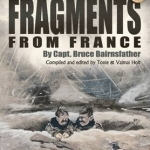
Best of Fragments from France
Bruce Bairnsfather, Tonie Holt and Valmai Holt
Book
Bruce Bairnsfather (BB) was the most famous cartoonist of the First World War and his soldier...
Gareth von Kallenbach (980 KP) rated the PC version of Battlefield 1 in Video Games
Jun 19, 2019
Players to take part in the solo campaigns find themselves reliving various battles from the point of those who participated in them. There is a tank mission behind enemy lines in Europe, a battle in the Italian mountainside, a thrilling aerial scenario, a very intense and emotional story set against the battle of Gallipoli, and a thrilling desert adventure featuring Lawrence of Arabia himself.
One of the great things about the game is that it takes modern gameplay tactics such as trying to secure an objective or defeat enemy units and infuses it with a sense of the past. Weapons are slow to load, are not always the most accurate at a distance, and have a crudeness about them that is refreshing in this era of games featuring advanced weaponry and technology. This does require a bit of a learning curve as there have been times where I would unload a full magazine on an enemy player and multiplayer mode only to see them survive and dispatch me with one or two shots from pistol. Once you start to get the way the weapons work and develop strategies to work within their strengths and limitations, you’ll soon find yourself able to make solid progress in the game.
The solo play campaigns allow players to set a difficulty that is best suited for their style of play and have very interesting and gripping narratives.
Many players will keep their focus on the multiplayer portion which has campaign objectives as well as quick matches. This does take a bit of learning as the landscapes are large and there are plenty of places for players with higher grade weapons to pick up new players before they even know an enemy is near. Naturally your weaponry choices to get better as your on-field accomplishments merit them it is also important to note that due to the vast landscapes littered with foxholes, trenches, villages, and other locales, wide open areas where players are very exposed and vulnerable are numerous.
Getting a tank often seems like a big accomplishment but when you realize that the vehicle is slow to turn it is a sitting duck for enemy artillery, explosives, and other tanks. Strategy and teamwork are vital to the success of any mission especially when players can move up and bring in one of the massive zeppelins into the battle. I really enjoyed flying the planes of the era but had to remember that there reduced speed made it very difficult turn especially for somebody who was used to strafing a target, flying into the distance, making a wide turn, and then attacking again. I found myself that many times with the leaving the battlefield warning and was not able to turn fast enough to get myself back where I needed to be.
As somebody who studied history extensively in college, it was amazing to get a sense of the war the on the pages of history books and learn how in this era of new technology such as planes, tanks, gas, machine guns, Zeppelins, and more, the capacity to do devastating damage upon an enemy was massive as truly technology greatly overshadowed the tactics and medical abilities of the era.
Battlefield 1 is a glorious achievement and gaming as it takes an error that has been largely ignored and brings it forward incredible detail combined with thrilling battles that are loaded with customization options that will keep players playing well into the future. With the planned DLC content to come, I’m very interested to see what direction the developers will take it as there are countless possibilities ahead.
http://sknr.net/2016/10/30/battlefield-1/
Sassy Brit (97 KP) rated Let The Dead Keep Their Secrets in Books
Jun 5, 2019
The plot opens with New York opera singer Claire Buchanan calling on the investigative services of Prudence MacKenzie and her partner, Geoffrey Hunter. Claire shows up at their door begging them to find out exactly how her twin sister, Catherine, and newborn daughter died, believing it was not from natural causes. Catherine’s husband, Aaron Sorenson, is a scoundrel and appears to be marrying women, getting them pregnant, and then having baby and mother die in childbirth. Prudence and Geoffrey find that childbirth can be dangerous to one’s health as they realize that Sorenson’s current wife may also be in danger. His motive, both the late wife and the current wife would inherit a substantial estate, which will go to him upon their death. Sorensen seems to always be in need of money to pay mounting gambling debts. As the tension mounts the investigative team is putting themselves at risk in attempting to expose the murder-for-inheritance scheme.
The author noted, “Catherine was emotionally abused. Women during that time period did not have much choice. In the Gilded Age in New York women were still property of their husbands. They were very limited to what their husbands wanted.”
One of the important clues is a photograph of the late mother and child. Simpson weaves into the story a Victorian Era custom, post-mortem photography. During these scenes readers learn of the spiritualists who believe “about the possibility of capturing an image of the soul leaving a body at the moment of death.” It was during this time that Claire senses something from her twin sister. The author commented, “During my research, I read how twins separated by birth and raised by different families still have the same likes and dislikes and can sense how each other feels.”
Through the characters people learn of the Gilded Age era, with a fascinating description of the homes, the period clothing, and the city of New York. Unlike many women of the time, Prudence is very unconventional, desiring to take the bar exam and become a litigator. For now, she is content to be an amateur sleuth to her partner, ex-Pinkerton agent Geoffrey Hunter, as she learns on the job. “I wrote Prudence being raised by a widowed father who looked at her as a replacement for a son. He did not make an exception for her being a girl and made sure she had a very well developed sharp legal mind. She is determined to make her own way even though she inherited wealth. I read that the Pinkerton Agency hired a lady detective during the Civil War and knew I wanted to make my heroine an investigator who is constantly challenged by Geoffrey.”
The hero and heroine also have flaws. The author uses events that happened during the Gilded Age paralleling them with what is happening today. Simpson explained, “Geoffrey has left his southern roots, abandoning his culture and family. He has a lot of contradictions. Prudence must struggle with her addiction to the drug laudanum. She was given it by her family doctor to help her cope with her father’s passing and then her fiancé’s death. She overcame the reliance on laudanum but not without a terrible struggle and the knowledge that she would never be entirely free of it. I parallel it with the opioid epidemic today. People became accidental addicts because they were given the drugs legally to cope with physical and emotional pain.”
The antagonist, Simpson has no redeeming qualities. He is a cold and calculating thief, a swindler, and bigamist who victimizes rich women. “I wanted to write an absolute villain. He is unscrupulous, uncaring with no conscience. He had every vile habit known. I do not write cozy mysteries, but historical noirs. My bad guys are really, really bad who cause awful things to happen.”
The author definitely had done her homework. “I want to feel I live in this world for awhile and to get the reader to feel that also. I read the New York Times Archives and fall into the rhythm of the language used, how they spoke, wrote and thought. It puts me in the mindset of the character I am writing about.” With her detailed descriptions and gripping story Simpson has also drawn the reader into the time period through an exciting and action-packed mystery.
